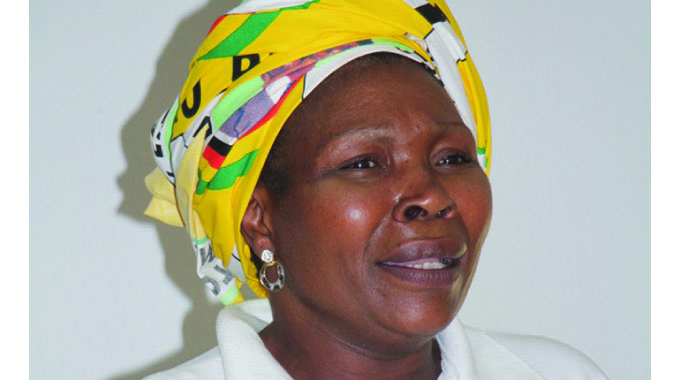Cyclone Idai victims get lease of life through livelihood projects

Mashudu Netsianda recently in Chimanimani, Manicaland
GOVERNMENT in partnership with the United Nations (UN) and its agencies has breathed a new lease of life to communities affected by Cyclone Idai three years ago through funding several projects to improve livelihoods under the Zimbabwe Idai Recovery Project (ZIRP).

Zimbabwe Idai Recovery Project (ZIRP)
Cyclone Idai, the tropical storm that killed hundreds of people, destroyed crops and livestock and battered eastern and central parts of the country in 2019, was the worst weather-related disaster in more than 100 years in Zimbabwe.
Intense Tropical Cyclone Idai was one of the worst tropical cyclones on record to affect Africa and the Southern Hemisphere.
The storm caused catastrophic damage and a humanitarian crisis in the eastern parts of Zimbabwe, Mozambique and Malawi, leaving more than 1 300 people dead and many more missing.
The storm caused high winds and heavy precipitation in Chimanimani and Chipinge, the worst hit districts, causing riverine and flash flooding and subsequent deaths, destruction of livelihoods and properties.
The livelihoods of over 270 000 people across the seven districts of Chipinge, Chimanimani, Buhera, Bikita, Mutare, Gutu and Chiredzi were affected by Cyclone Idai in March 2019.
Government has partnered with development partners to restore the livelihoods of the victims through implementing several projects.
Some of the projects, which Chronicle visited during a media tour include the revitalised Maunganidze Irrigation Scheme, which is located in Ward 1 of Chipinge district, the rehabilitated Tiya road in Ward 16 of Chimanimani district and the newly constructed Hlabiso Clinic in Ward 22 of Chimanimani district.
Established in 1997, the 65-hectare Maunganidze Irrigation Scheme benefits 84 smallholder farmers each with a landholding of 0,8ha per household.
In 2019, the scheme was among schemes that were hard hit by Cyclone Idai which destroyed canals, boreholes, caused flooding and destroyed the perimeter fence.
This resulted in the scheme being one of the sites selected for rehabilitation under the ZIRP.
Prior to interventions by Government and development partners, the irrigation scheme operated below 50 percent capacity due to water shortages.

United Nations Office for Project Services (UNOPS)
After the assessment of the damage, the United Nations Office for Project Services (UNOPS) and the Food and Agriculture Organisation (FAO) assisted farmers with inputs, which helped the farmers to quickly recover from the impact of the cyclone.
It also helped farmers to realise their potential as commercial yields of five tonnes per hectare of maize and two tonnes per hectare of sugar beans were attained.
The whole scheme and the surrounding community became food secure as a result of the ZIRP intervention and financial support from the World Bank.
A resident farm manager and Agritex officers provide capacity building to the farmers.
The Government has since adopted this capacity building approach by employing business managers on the irrigation schemes throughout the country.
The rehabilitation of destroyed infrastructure by UNOPS is almost complete with major highlights being fencing of the scheme, repairing of damaged canals, boreholes and installation of 237 solar panels to assist with additional power for watering the plots.
The irrigation scheme is renowned for tomato production in winter, while maize production takes precedence in summer.
The Tiya road rehabilitation project has created employment for 130 people in the locality while 3 200 people are benefiting from Hlabiso Clinic.
Speaking during a recent UN Media Workshop on Development Reporting in Mutare, Manicaland Provincial Affairs and Devolution Minister Nokuthula Matsikenyeri hailed the partnership between the Government and the UN for helping Chimanimani and Chipinge districts to recover from the impact of Cyclone Idai.
“It is important to note that Manicaland Province and with special reference to Chimanimani, and Chipinge districts, continue to recover from the impact of Cyclone Idai.
As a province, we are grateful for the timely intervention of our Government and the role played by UN agencies as our key development partners during and in the aftermath of Cyclone Idai,” she said.
Minister Matsikenyeri said the Government managed to relocate people who were displaced by Cyclone Idai to Runyararo Settlement, a new site that was established at the former Westend Farm in Chimanimani.
“This is one case in point of the Government and UN synergy, and profitable cooperation which started with the provision of temporary tents at Kopa and Ngangu to the displaced and final permanent modern homesteads at Runyararo for the victims,” she said.

UNITED Nations (UN) resident and humanitarian co-ordinator, Mr Edward Kallon
The UN Resident Coordinator in Zimbabwe Mr Edward Kallon said the UN in Zimbabwe implemented arguably the largest resilience programme in Zimbabwe, covering 18 districts and executed through seven consortia.
The programme strengthened the capacities of vulnerable communities to proactively make decisions in response to severe economic, environmental, climatic, and social shocks and stresses.
“Through the Socio-Economic Framework, the UN development system adopted a crisis modifier to address challenges caused by Covid-19. This entailed reprogramming and repurposing to deliver integrated support towards response and recovery,” said Mr Kallon.
“In addition, the UN collaborated with the Government of Zimbabwe to strengthen key value chains, including value addition and enterprise development in small-scale gold mining and agriculture, targeting women and youth, as well as green skills development.” – @mashnets










Comments